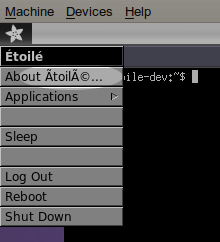My Ideal Window Manager
I’ve been using xmonad (with a slightly modified bluetile setup) for about a year now, and it’s been pretty great. But I still feel locked in to its grid sometimes, and miss the direct manipulation that a “normal” window manager (like metacity) provides - specifically allowing quick movement and resizing by using alt + mouse dragging. Bluetile has the option of floating windows, but actually moving or resizing them is so cumbersome that it’s not really worth it. I also sometimes wish that my windows could overlap, so that (while still tiled) a window can extend beyond the bounds of its tile if I want it to.
I also am a sucker for shiny things, and xmonad is far from a shiny thing (in terms of graphics). I tried out gnome-shell yesterday, and while buggy, it is exceedingly shiny. And considering that gnome-shell will not allow alternate window managers (that was a surprise to me), I have put some thought into what my ideal window manager would look like.
I’m keen to try and implement this somewhere. It’s unlikely to be xmonad, as I want builtin compositing support (and haskell is a great language, but I can barely figure out how to configure xmonad, let alone extend it). So I’m wondering if the following can be done as a plugin to either gnome-shell or mutter. Hopefully gnome-shell, as I can stomach javascript hacking a lot easier than compiling C extensions.
Also, if people know of an existing project (with compositing!) that has these sorts of features, I’d be interested to know - I don’t want to have to reinvent the wheel, but it seems like most tiling window managers are too rigid and keyboard-based for me, while most “grid” extensions to floating window managers are too manual.
So, here’s the plan:

